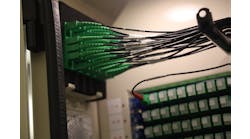In a ruling that could affect microgrid options in California, a judge said Santa Clara, California, violated state law when it passed a resolution banning non-renewable fuels for distributed generation, including fuel cells.
Santa Clara County Superior Court Judge Thomas Kuhnle last month agreed with Bloom Energy that the California Environmental Quality Act required the city to conduct an environmental assessment before passing the resolution in May.
Fuel cell company Bloom Energy sued the city last year over its resolution, which would bar fuel cells that use natural gas. The city viewed the measure as part of its efforts to eliminate greenhouse gas emissions from its power supply by 2045.
When the Santa Clara City Council approved the resolution, city staff said that Santa Clara would continue to support microgrids as long as their generating sources were from renewable technologies such as solar power.
Staff said the city was developing microgrid interconnection standards as required by the state, but that the standards must assure microgrids are built in an “environmentally friendly manner” that aligns with clean energy goals of California, the city and its municipal utility.
Alternative more polluting than fuel cells
Bloom argued that if it doesn’t install its fuel cells at a planned data center, the city’s municipal utility — Silicon Valley Power — would replace the fuel cells with its own power, which would produce more greenhouse gas emissions. The utility owns three natural gas-fired power plants.
The city resolution could lead to higher greenhouse gas, nitrogen oxide (NOx) and sulfur oxide (SOx), according to Bloom. Also, the resolution, which excluded backup generators, could lead businesses to install onsite diesel generators, the fuel cell company said.
Santa Clara argued its resolution wouldn’t significantly affect the environment and therefore it didn’t need to conduct an environmental analysis of the measure.
In his decision, Kuhnle found the city’s resolution could have a significant effect on NOx and SOx emissions as well as on health, water quality and noise. The city also failed to show its resolution would cause more emissions from backup generators, according to the judge.
“The city has not met its burden of showing that substantial evidence supports the finding that there is no possibility that approval of the resolution — the activity in question — may have a significant effect on the environment,” Kuhnle said.
Bloom’s fuel cells are used in 75 microgrids, according to the San Jose, California-based company. Bloom contends its fuel cells produce less carbon emissions than a typical combustion turbine and almost no NOx or SOx emissions
“Environmental policy should actually work to reduce harmful environmental impacts, serve the public good, and be carefully crafted in consultation with experts,” Josh Richman, Bloom’s vice president of business development and policy, said in response to the court decision. “But in this case, officials in the City of Santa Clara made the inaccurate claim that their policy was good for the environment and would contribute to reduced emissions — ignoring the views of environmental experts on the policy’s potential environmental harm and the needs of the community for clean, resilient power sources.”
Track news about fuel cells in microgrids. Subscribe to the free Microgrid Knowledge newsletter.







